Relatively low disease has been observed in Tennessee so far. The warmer winters most areas had may have allowed survival of disease inoculum and paired with storms coming from the south could result in more disease development this season, so scouting and correctly identifying diseases are important.Whether a disease will develop and cause economic loss depends upon multiple factors including:
- Disease presence
- Weather conditions
- Cropping history
- Hybrid disease susceptibility
Foliar fungicide applications in corn is more likely to provide a response in yield when disease is present or there is significant risk of disease, weather conditions favor disease development, the field is corn after corn, and a disease susceptible hybrid is planted. Research data from University of Tennessee and other universities has continuously found these factors to strongly influence the magnitude and consistency of yield response to a foliar fungicide application in corn.
When factors warrant a fungicide application, the application timing that has provided the most consistent yield response over non-treated corn is a fungicide application at VT or R1 growth stages (tasseling to pollination). Current research is investigating benefit from later application around R3 (milk stage).
Major corn diseases are favored by humid conditions, so the edges of fields will not be the place to scout. Within fields, especially low spots that hold moisture are good areas to scout for disease as it may develop in those areas first. Be on the lookout for lesions and use the resources on UTcrops.com and particularly under Corn Diseases in the photo gallery (Corn Diseases in Tennessee) which contains disease images and weather conditions that favor disease development (soon to be uploaded into the mobile friendly field guide site – guide.utcrops.com). For you tweeters out there, tweet a picture of any corn diseases you’re seeing, the disease name, and county and state to @corndisease.

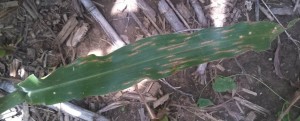
One of the most common foliar corn diseases in Tennessee is gray leaf spot (caused by a fungus – Cercospora zea-maydis), especially in continuous corn fields (see Images 1 and 2). Other diseases that may be seen include anthracnose leaf blight (caused by a fungus – Colletotrichum graminicola), Northern corn leaf blight (caused by a fungus – Exserohilum turcicum), Southern corn rust (caused by a fungus – Puccinia polysora), and common corn rust (caused by a fungus – Puccinia sorghi).
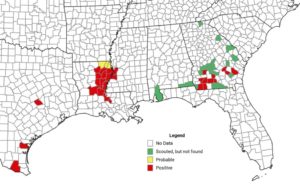
While southern corn rust is the one of the most damaging diseases, be sure it is correctly identified and not confused with common rust. The characteristics that differ between the rusts are the location, color, shape, and distribution of pustules (see Table 1 and images 4 and 5). When in doubt don’t hesitate to contact your local county agent for advice on disease management and identification.
Southern rust has not been reported in TN, but has in GA, LA, MS, and TX. Visit corn.ipmpipe.org/southerncornrust/ to see the latest on where southern rust has been reported.
Table 1. Comparison of Southern and Common Rust
| Pustule Characteristics: | Common Rust | Southern Rust |
| Location | upper and lower leaf surfaces | primarily upper leaf surface |
| Color | brownish, red | orange to light brown |
| Shape | elongated | round |
| Distribution | scattered | densely packed |
| Other differences: | ||
| Optimal Temperature | 61-77 °F | 77-82 °F |
| Probability of Effecting Yield | low | moderate |
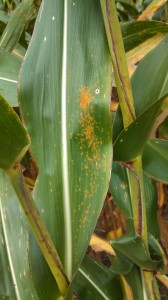
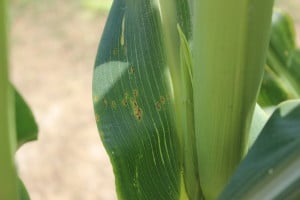
The response in yield to break-even on fungicide application can be found in Table 2. Using a wide net of break-even scenarios based on past average corn prices and $12 to $36 application costs the table shows bushels per acre response that would be required to recover the cost of the fungicide application.
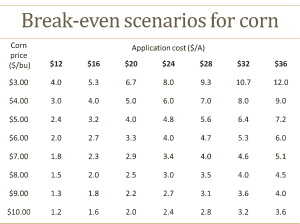
There are multiple fungicides labeled for corn and for the management of different diseases. The multistate collaborative, the Corn Disease Working Group (CDWG), has developed information on fungicide efficacy for control of certain corn diseases. This corn fungicide efficacy table can be found at UTcrops.com (Corn Fungicide Table – CDWG) and linked here as well. Application coverage is also important, which includes using sufficient amount of water per acre and adequate droplet size based on the product being applied.

